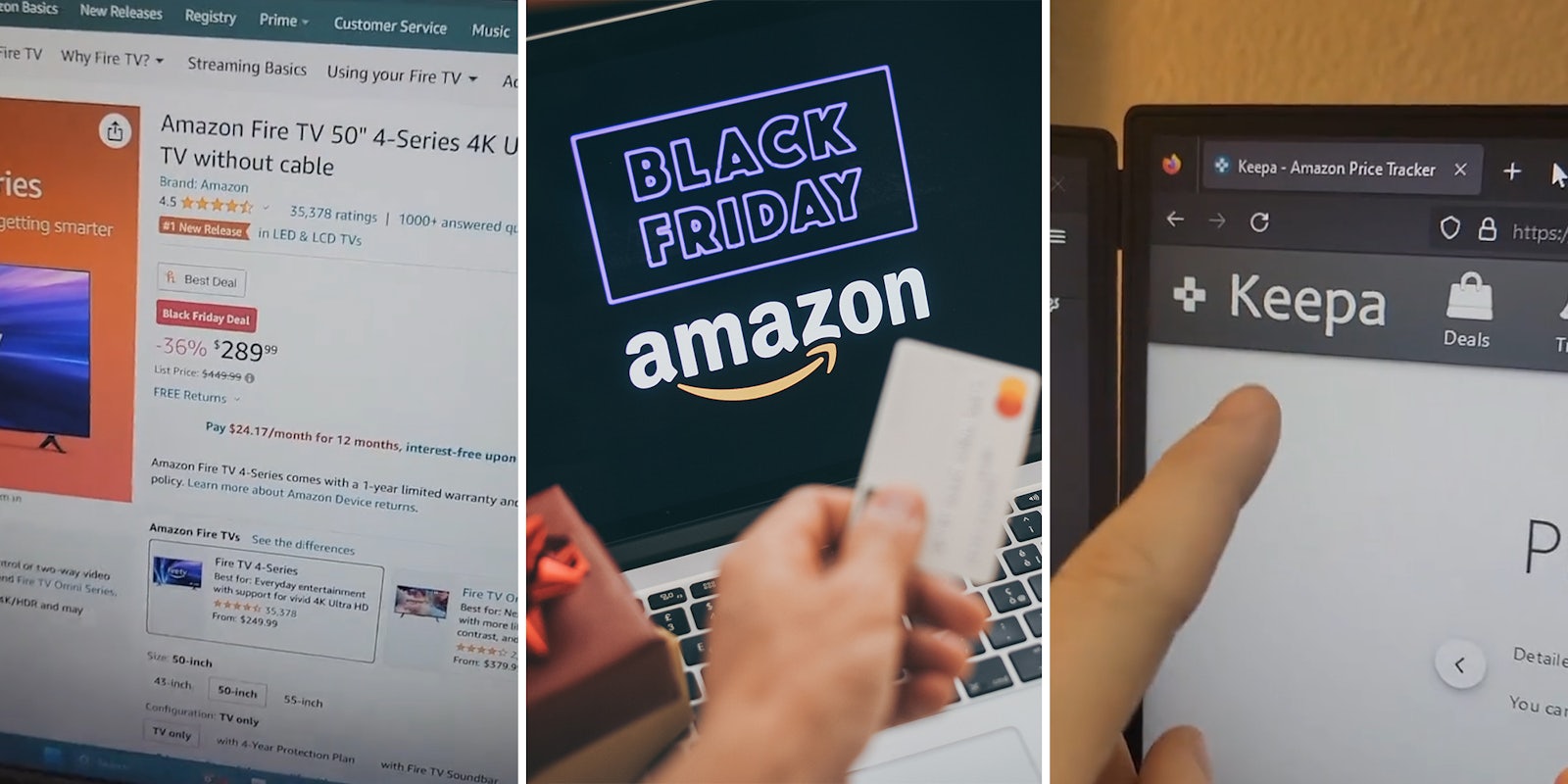In the past, Black Friday was thought of as a day with incredible deals. Images of people lining up outside of stores would populate news stations, and across the internet, sites would advertise sales that seemed almost too good to be true.
Nowadays, there’s much less enthusiasm around Black Friday—and it turns out that some of those “too good to be true” deals may be just that.
For example, logging into Amazon, one may be surprised to see a TV discounted by 36%. However, in a video with over 1.1 million views, TikTok user Sam Thibault (@samthibault04) shows why this isn’t actually the case.
“This 56-inch TV is supposedly 36% off,” he explains. The TV is now listed at $289.99, reduced from a price of $449. “While it technically used to be $449, it wasn’t always $449.”
From here, Thibault uses a price-tracking browser extension called Keepa that allows one to see the previous prices of Amazon items. Through this, he reveals that the TV was once $299 before October. Then, the price was increased, only to be reduced to around the same price for a Black Friday “sale.”
Thibault then shows other examples, ending with a monitor that is genuinely on sale, showing that some prices have, in fact, been reduced.
Thibault isn’t the first to note this issue. Several users have noted that Prime Day “sales” did not result in a lowered price, and another user showcased Thibault’s same theory in a video from October of this year.
Amazon is currently facing a class action lawsuit citing this specific issue. Plaintiffs in Kinney, et al. v. Amazon.com Inc., et al. contend that “Amazon.com posts a false price that was not consistently used and then discounts from that price instead,” which the lawsuit alleges is a violation of FTC guidelines.
@samthibault04 Classic Amazon #samthibault #techtok #foryou #blackfriday #amazon #pctok ♬ original sound – Sam Thibault
Back on Thibault’s video, users shared their thoughts about this practice in the comments.
“I been looking at automatic litter boxes for a while and they’re literally the same price with a black Friday deals sticker,” said a user.
“This is why I add items to my cart that I want months in advance, screen shot the price, and come back Black Friday to see if it’s actually a deal,” offered another.
“We’ve been watching a $200 rice cooker for 2 weeks. now it’s “on sale” for $350 from $400???” alleged a third.
The Daily Dot reached out to Amazon and Thibault via email.
Update 12:46pm CT, Nov. 26, 2023:
In an email to the Daily Dot, Thibault said that this has been an issue for some time.
“This has been an ongoing thing for a while but I noticed it last year and exploded it more this year with Keepa and CamelCamelCamel,” he wrote. “The reason why this happens is simple, greed… these companies want the most they can get, and what better way to do that than creating fake and misleading Black Friday and Cyber Monday deals.”
“If someone wants to find an actual deal it is possible as I pointed out with the LG monitor in my video, users should start using keepa and camelcamelcamel anytime they use Amazon,” he continued. “That way they can see an accurate depiction of the price history.”
He then offered his opinions on the practice.
“My overall thoughts, it’s a terrible practice that they might have gotten away with back in the ’90s but now this practice will slowly die because of things like keepa and videos like mine,” he stated.


